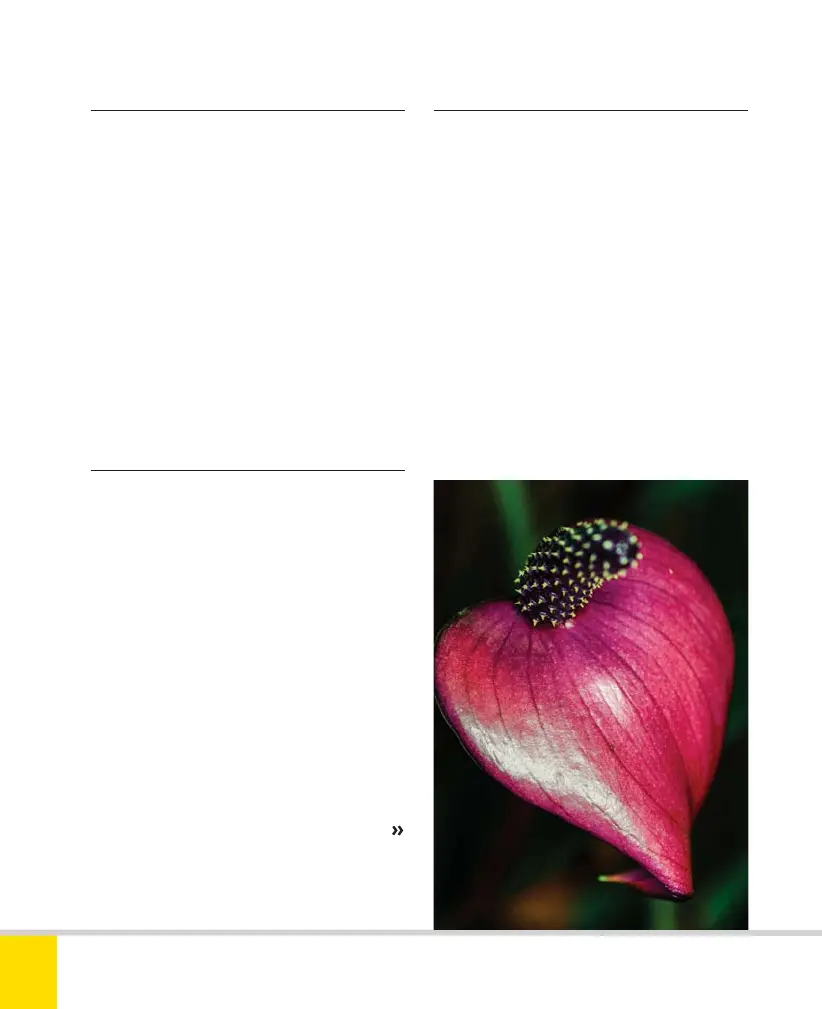Free ebooks ==> www.ebook777.com
164
NIKON D5300
5
›
Bellows
›
Reversing rings
›
Light reduction
Like extension tubes, bellows extend the
spacing between the lens and the camera
body, but they are not restricted to a few
set lengths. Again, there’s no extra glass to
impair optical quality. However, bellows are
expensive, heavy, and take time to set up.
They are usually employed in a studio or
other controlled setting.
Nikon’s PB-6 bellows offers extensions
from 48mm to 208mm, giving a maximum
reproduction ratio of about 11:1. Focusing
and exposure are manual only.
Also known as reverse adaptors or inversion
rings, these allow lenses to be mounted in
reverse; the adaptor screws into the filter
thread. This allows much closer focusing
than when the lens is used normally. They
are ideally used with a prime lens, such as
the classic 50mm f/1.8—Nikon’s inversion
ring BR-2A fits a 52mm filter thread.
Because accessories like extension tubes
and bellows increase the effective physical
length of the lens, they also increase the
effective focal length. However, the
physical size of the aperture does not
change. The result is to make the lens
“slower”; that is, a lens with a maximum
aperture of f/2.8 behaves like an f/4 or
f/5.6 lens. This makes the Viewfinder image
dimmer than normal, and affects the
exposure required; the camera’s metering
will accommodate this, but you may need
a longer shutter speed or more light.
Reversing rings do not have this effect.
MACRO LIGHTING EQUIPMENT
This shot was taken with the Sunpak Ring Light.
It gives even, almost shadowless illumination on
the subject, but there is a bit of glare. 100mm
macro, 1.6 sec., f/16, ISO 100, tripod.
Nikon D5300 Ch5 158-167 P2 RY.indd 164Nikon D5300 Ch5 158-167 P2 RY.indd 164 19/02/2014 16:5819/02/2014 16:58

